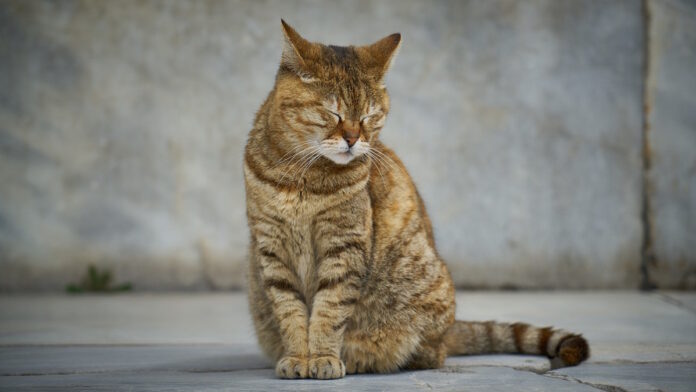Mark Twain quotes, “When a man loves cats, I am his friend and comrade, without further introduction.”
Cats are those pets who need minimum maintenance in terms of time, food, and care. However, one must be keen to understand the basic behavior of cats and common cat health problems.
Like other pets, cats are like toddlers; you can’t leave them unnoticed. They need to be taken care of every time.
As animals have different ways of expressing care, love, pain, and suffering, you should also have basic knowledge of some common cat health problems.
This blog will guide you on the symptoms, problems, and treatment of some common cat health problems.
Let’s meow on the topic:
1. Feline-Obesity
Just as humans face obesity, even cats become obese when not cared for. Generally, obesity is caused by eating more and exercising or walking less.
Obesity leads to heart disease, respiratory problems, liver problems, and diabetes. If you notice your cat growing out of shape, it is time to visit a good veterinary doctor.
You can quickly identify this by weighing your cat. The average cat should weigh between 3.5 and 4.5 kg.
You should be able to feel your cat’s ribs when stroked by the side of his abdomen. Obesity of your cats can be treated by making them walk, playing with other pets, scratching on pads, and increasing activity while providing food in portions.
Related: How To Tell if a Cat Has Separation Anxiety
2. Hyperthyroidism
Just as humans have thyroid glands, cats also have them. Thyroids come in two different types – hyper and hypothyroid. Feline hyperthyroidism is a glandular disorder. Common symptoms include excessive vomiting, increased weight loss, appetite, diarrhea, drinking, and urination.
In the case of hyperthyroidism, it’s better to consult a veterinarian, as the cat might have to undergo certain pills and testing.
3. Feline Lower Urinary Tract Diseases
This has been regarded as one of the reasons why owners keep their cats for adoption. They fail to understand the symptoms of FLUTD.
A FLUTD is a group of diseases with multiple causes. The visual symptoms include bloody urine, urinating everywhere, crying while urinating, licking private parts continuously, dehydration, lack of appetite, weight loss, and vomiting.
The best treatment is to get your cat hospitalized and keep it under intensive care to recover. To promote the cure, providing cats with dietary supplements is best.
To ward off your cat from the disease, it’s better to provide the cat with a suitable living environment along with a good diet and clean water.
4. Fleas
Fleas are a common problem when it comes to cats. The easy symptoms of fleas are the black spots on your cat’s body. This includes constant scratching, licking, hair loss, and skin infections.
The best treatment for avoiding fleas is to spray your cat with anti-bacterial powder, oral medication, foams, and topical medication.
5. Tapeworms
Tapeworms inside the intestinal tract can be a dangerous health issue for your cat. The symptoms of tapeworms include vomiting, loss of appetite, and worms in feces. Curing this disease becomes crucial as tapeworms may grow as long as 2 feet.
The treatment of tapeworms may include injections, oral medicines, and topical medication.
6. Feline Leukemia
This is noted as one of the dangerous feline diseases as they spread through urine, nose discharge, and saliva. Cats are affected by this disease through bites, sharing food, and through contact.
Though this disease is not curable, it can be prevented by maintaining cleanliness. This includes keeping your cats indoors, ensuring planned vaccination for your cat, and good hygiene habits.
7. Sneezes
Kittens and cats can easily be affected by respiratory diseases like the flu and common cat cold. The simple symptoms include a runny nose, sneezing, low appetite, and watery eyes.
For viral infections like these, owners should nurse their cats and consult veterinarians who may prescribe antibiotics.
8. Swollen Ears
You must visit your veterinarian to evaluate your cat’s health by undergoing regular check-ups.
If you find cats scratching their ears, leading to redness, discharge or odor, ear mites, wax buildup, or tumors, it is a symptom of ear cancer or hematoma. This disease can lead to hearing loss.
The treatment for this disease can be well worked under hospitalization and intensive care.
Now, You Know Common Cat Health Problems
If you are experiencing anything strange with your cat, it’s time to schedule an appointment with your veterinarian.
If you are sharp enough to observe some common cat health problems, you may be one step quicker to save a soul.
Disclaimer: Information provided in this post is for educational purposes only. Visit a veterinarian to get proper diagnose and treatment for your cat.
Additional Resources:

